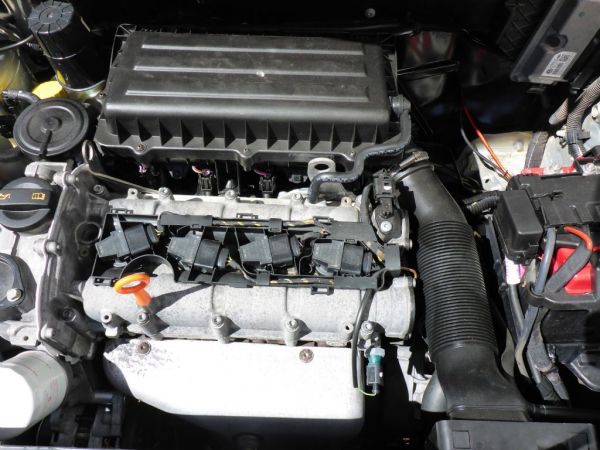Replace a state-of-the-art clp engine for better performance.
How a Clp Engine Can Enhance Efficiency in Different Industries
The arrival of CLP engines marks a significant change in functional performance across numerous markets, driven by their ability to optimize fuel consumption and decrease downtime. As companies increasingly focus on sustainability alongside effectiveness, the role of CLP engines ends up being even more crucial.
Introduction of CLP Engines
CLP engines, or Constant Liquid Propellant engines, stand for a substantial innovation in propulsion innovation, especially for space applications. These engines make use of a constant feed system that permits the sustained expulsion of propellant, bring about improved efficiency and efficiency compared to traditional strong or hybrid propulsion systems. By preserving a constant circulation of liquid propellant, CLP engines can attain a lot more accurate drive control, which is vital for maneuvering spacecraft in numerous objective scenarios.
The layout of CLP engines integrates innovative materials and innovative gas administration systems. clp engine. This causes minimized weight and increased dependability, important variables for long-duration space goals. The continual operation lessens the risk of combustion instability, an usual difficulty in standard rocket engines.

Advantages in Production
The production of Continual Fluid Propellant (CLP) engines provides a number of significant advantages that boost both performance and cost-effectiveness. Among the main benefits is the streamlined manufacturing procedure, which minimizes the complexity related to traditional propulsion systems. By making use of fluid propellant, makers can accomplish higher precision in engine efficiency, bring about enhanced energy result and lowered waste.
Furthermore, CLP engines help with a greater level of modularity, enabling for less complicated combination into different production lines. This adaptability can substantially lower lead times and boost overall operational flexibility. Using CLP innovation also often tends to reduce the need for considerable maintenance as a result of fewer relocating parts, which converts into reduced downtime and operational costs.

Applications in Logistics
Leveraging Continual his comment is here Fluid Propellant (CLP) engines in logistics offers significant advantages in operational efficiency and reliability. These engines offer a robust solution for various transportation needs, enabling the seamless movement of items throughout huge ranges. The intrinsic style of CLP engines permits look these up consistent power output, which converts right into smoother and a lot more predictable transportation schedules.
One of the vital applications of CLP engines in logistics remains in durable freight transportation, where they can drive both ground and airborne automobiles. Their capability to maintain high efficiency under differing tons conditions guarantees that delivery timelines are fulfilled, therefore improving customer satisfaction. In addition, CLP engines can be incorporated into automated logistics systems, facilitating real-time monitoring and enhancing route preparation.
Furthermore, the sturdiness of CLP engines decreases upkeep downtime, enabling logistics companies to optimize their operational capabilities. This is especially advantageous in warehousing procedures, where effectiveness in dealing with and moving products is crucial. As logistics proceeds to develop, the assimilation of CLP engines represents a forward-thinking strategy that not only boosts performance yet likewise sustains the market's expanding demands for dependability and speed.
Effect On Energy Performance
How do Continual Liquid Propellant (CLP) engines improve power efficiency in transport? CLP engines make use of a consistent circulation of fluid fuel, maximizing combustion processes and maintaining a steady drive click here to find out more output. This layout minimizes energy losses connected with traditional burning engines, where gas delivery can differ and bring about ineffectiveness.
The continuous procedure of CLP engines enables an extra efficient thermal cycle, causing greater certain impulse contrasted to conventional engines. clp engine. This translates to lowered fuel intake for the exact same quantity of job done, considerably decreasing operational prices throughout different transportation industries, consisting of air travel and maritime industries
In addition, the capability of CLP engines to maintain ideal performance under varying lots conditions lowers the requirement for frequent acceleration and slowdown, additionally enhancing gas efficiency. Enhanced energy effectiveness not just adds to set you back savings however likewise causes reduce greenhouse gas discharges, lining up with worldwide sustainability goals.
Future Trends and Innovations
Emerging advancements in Continuous Liquid Propellant (CLP) engine modern technology assurance to change the landscape of transport performance and sustainability. As markets pivot toward greener alternatives, CLP engines stand at the forefront, incorporating cutting-edge products and style methods that improve performance while reducing ecological influence.
Among the most appealing trends is the adoption of hybrid systems that incorporate CLP engines with renewable resource sources. This synergy can optimize fuel consumption and lower exhausts, lining up with worldwide sustainability goals. Furthermore, developments in computational liquid characteristics (CFD) are assisting in the design of more aerodynamically reliable engines, bring about minimized drag and improved fuel performance.
Moreover, the advancement of wise monitoring systems is established to improve operational efficiencies. These systems utilize information analytics and IoT innovation to optimize engine efficiency in real-time, making sure that the engines operate within their most reliable specifications.
As research proceeds to check out different propellant formulas-- such as biofuels and artificial fuels-- the future of CLP engines looks appealing. By utilizing these technologies, industries can not just enhance their performance but likewise add considerably to a cleaner, extra lasting future in transportation.
Final Thought
In verdict, CLP engines represent a considerable advancement in effectiveness throughout multiple markets. Their capacity to optimize gas intake and lower operational costs, incorporated with a continuous feed system, enhances power outcome and functional integrity. The integration of sophisticated products and less moving parts reduces upkeep requirements, while alignment with sustainability goals placements CLP engines as an essential technology for the future. Proceeded technology in this area guarantees more enhancements in performance and ecological efficiency.